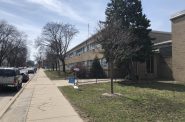New Youth Prison is Not the Answer
We can help youth and prevent crime by pursuing alternative strategies.
In light of the latest monitor’s report outlining deteriorating conditions at Lincoln Hills and Copper Lake Schools, it should be abundantly clear that constructing a new $42 million youth prison is not the solution to our state’s youth justice problems. As I predicted back in December, our institutions are failing due to delays in funding and lack of foresight from our state Legislature solving the youth corrections crisis. We must do better, and we must hold our state elected officials to their past commitments to true, meaningful youth justice reform. A new youth prison will only commit us to the status quo of a broken system.
Youth prisons are a dangerous relic of a bygone era. We have learned over the last several decades that incarcerating young people is not only harmful to those youth and their families, but also fails to advance safety, and in fact, ultimately puts the public at greater risk. Studies have consistently found that 70 to 75 percent of youth incarcerated in juvenile correctional facilities get rearrested within two or three years of release. Even controlling for offending behavior and other relevant factors, incarceration during adolescence can increase the likelihood of subsequent adult incarceration by nearly four times. Carceral facilities also continue to be places that disproportionately inflict harm on youth and families of color, perpetuating centuries-long cycles of systemic racism and oppression.
The lessons learned from the tragedies at Lincoln Hills and Copper Lake Schools are salient today, but not durable enough to withstand the test of time. To be sure, Lincoln Hills shocked our collective conscience with its use of solitary confinement, pepper spray, and practices that caused horrific physical and emotional harms to its residents. But higher staff ratios, increased therapeutic programming, and staff development and training on trauma informed practices inside facilities are all vulnerable to future budget cuts, union pushback, and political backtracking. Form and function will predetermine an eventual return to abusive prison conditions if a new prison is indeed what we build.
Our governor and Legislature propose to spend $42 million – an enormous amount of money – on an approach that has been shown to be ineffective over and over again. Instead, we should be thinking about how to invest in what we know does work: supporting young people and their communities by targeting the stresses, traumas, and marginalization that cause crime in the first place. All of these risk factors have been greatly exacerbated during the pandemic, and if we want crime and violence to go down, we need to make meaningful investments in our communities, not incarceration. Studies across the country have shown time and again that young people who engage in programming with evidence-based therapy, mentoring support, employment and education resources—particularly when these programs are led by youth advocates and credible messengers who can identify and empathize with them—are far less likely to reoffend and far more likely to go on to graduate from high school. This is in stark contrast to the results that incarceration produces, which include astoundingly high recidivism rates and abysmal education outcomes. Forty-two million dollars could go incredibly far and create a safer and healthier Wisconsin if we redoubled our efforts to expand pro-social supports and assist our youth in healing and growth.
Without a focus on eliminating youth prisons and replacing them with more effective therapeutic and community-based alternatives, we are conceding that real transformation of youth justice is too complicated and fraught with political risks to be tenable in our polarized state. We should not accept that when we can do so much better.
Mark Mertens, MSW, is Executive Director of the Norris Adolescent Center, member of the Youth Corrections Leaders for Justice and Former Administrator of the Children, Youth, and Family Services Division of the Milwaukee County Health and Human Services Department.
More about the Lincoln Hills and Copper Lake Facilities
- Evers’ Prison Plan Receives Mixed Reviews - WPR Staff - Feb 21st, 2025
- ‘First of its Kind in Wisconsin’ Collaboration Will Support Disabled Incarcerated Youth - Andrew Kennard - Dec 12th, 2024
- MKE County: Tight Budget Forces Difficult Vote on Housing, Juvenile Justice - Graham Kilmer - Nov 1st, 2024
- Letters from Evers, Republicans Show Clash on Juvenile Corrections - Andrew Kennard - Aug 17th, 2024
- Following Counselor Death, Staff, Family Plead for Help At Lincoln Hills - Andrew Kennard - Aug 16th, 2024
- Lawmakers Grill Wisconsin Prison Officials Over Safety, Employee Death at Youth Facility - Sarah Lehr - Aug 7th, 2024
- Future of Lincoln Hills Remains In Limbo - Isiah Holmes - Apr 12th, 2024
- MKE County: County Youth In State Prisons Declining Again - Graham Kilmer - Jan 15th, 2024
- Legislative Committee Okays $6 Million for 2nd Juvenile Facility - Devin Blake - Oct 1st, 2023
- Some Progress, Still Problems at Lincoln Hills - Isiah Holmes - Jul 9th, 2023
Read more about Lincoln Hills and Copper Lake Facilities here
Op-Ed
-
Rep. Fitzgerald Faces Protest In West Bend
 Feb 24th, 2025 by John Torinus
Feb 24th, 2025 by John Torinus
-
Proposed Earlier School Start Times Are Harmful
 Jan 29th, 2025 by Maggie Kerr
Jan 29th, 2025 by Maggie Kerr
-
Sean Duffy Is Odd Pick to Run Department of Transportation
 Jan 20th, 2025 by Frank Zufall
Jan 20th, 2025 by Frank Zufall






















The author mentioned a nice range of alternatives. As someone who has worked in Juvenile Corrections in Milwaukee, there are always a percentage of offenders who do not respond to diversion alternatives and, for the sake of public safety, need to be taken off the street. The recent You Tube video of the wanton recklessness of the Kia Boys and the repeated offenses that many juvenile car thieves have had is a good reason for the need for a secure juvenile facility.